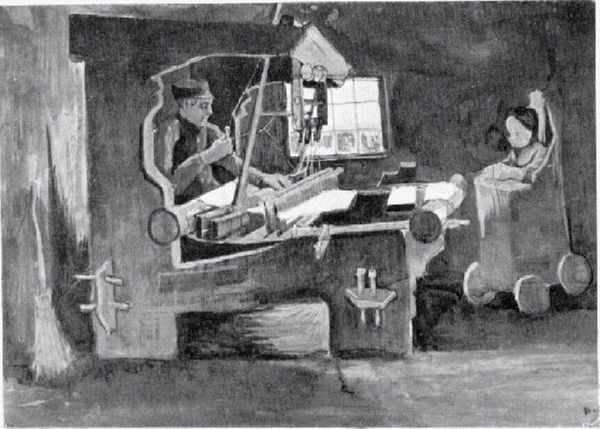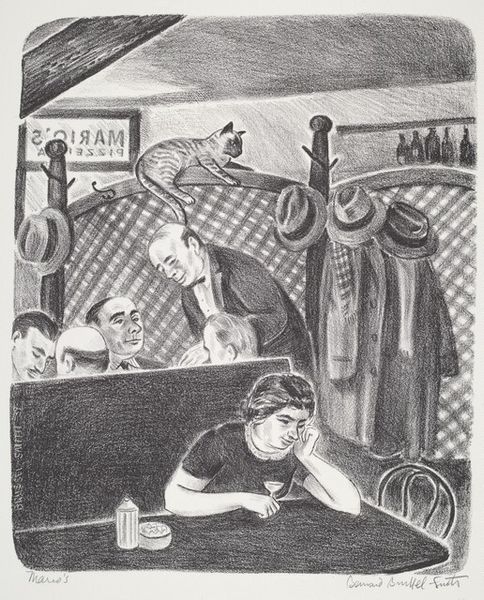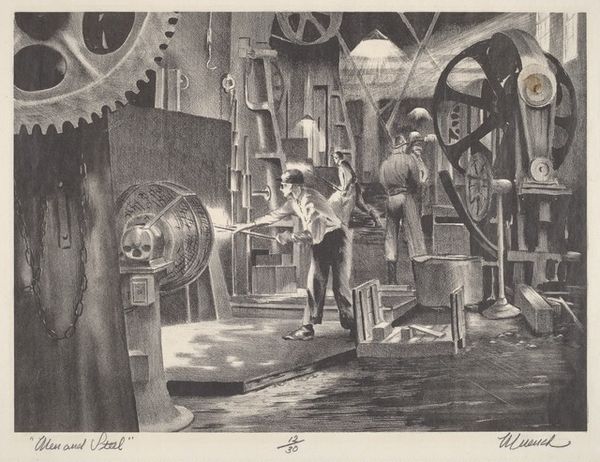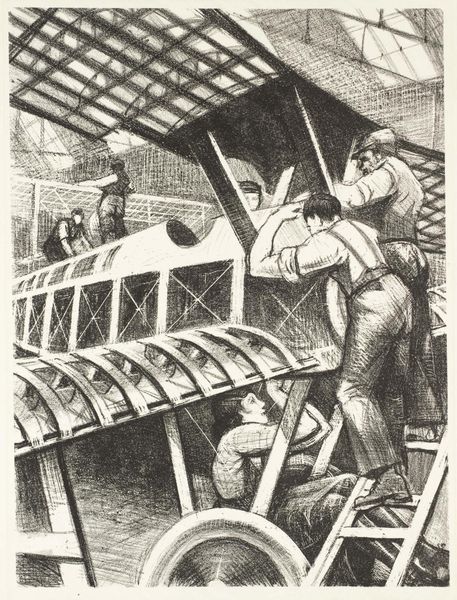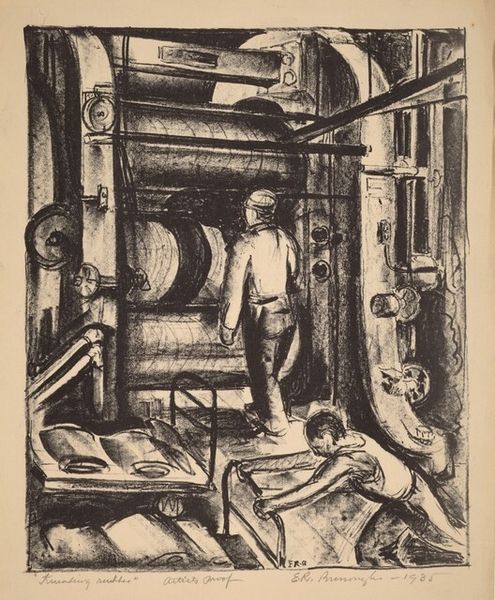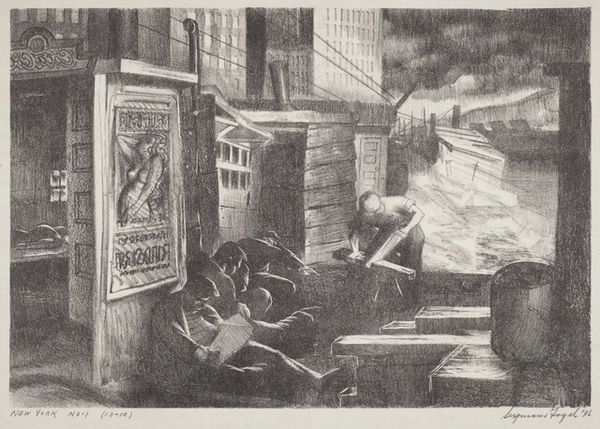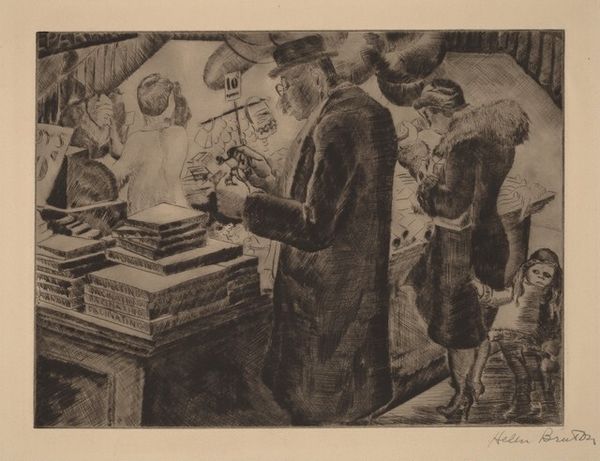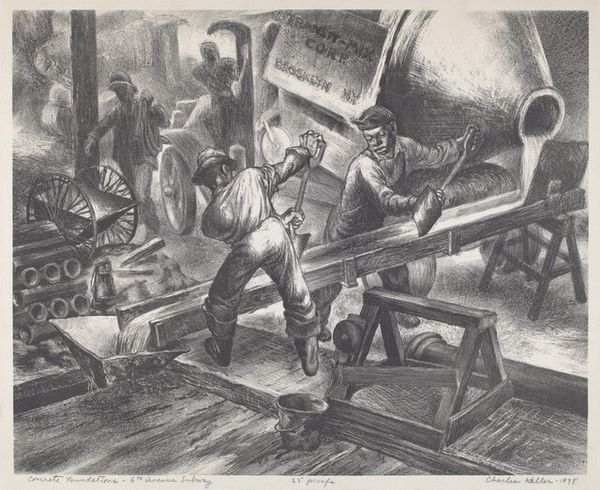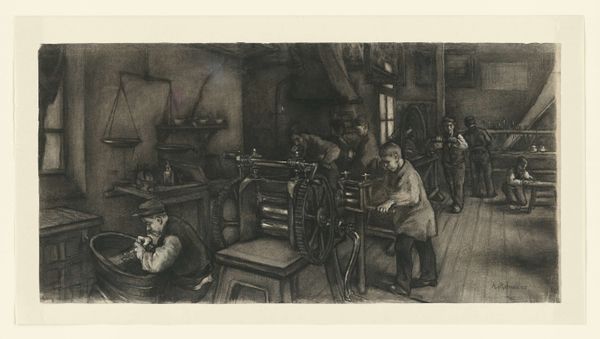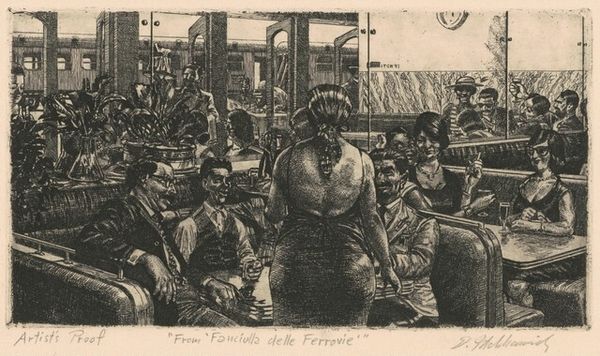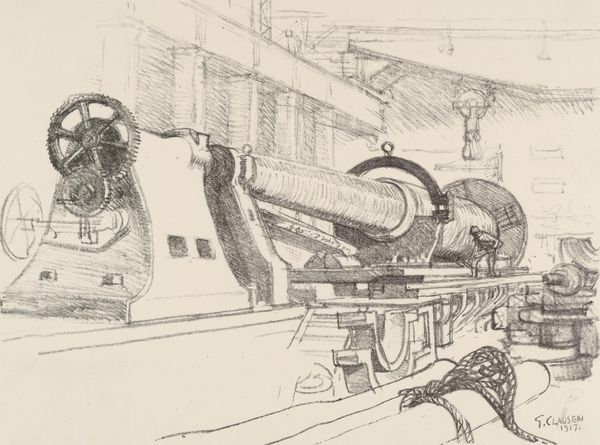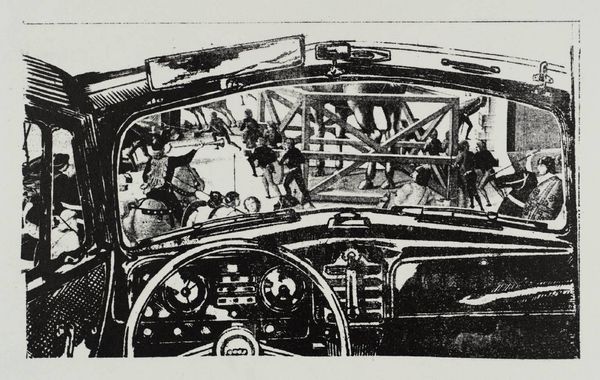
She is Only One of a Multitude of Efficient and Conscientious Women Workers in Engineering Industries 1941
0:00
0:00
drawing, charcoal
#
drawing
#
charcoal drawing
#
charcoal art
#
group-portraits
#
charcoal
#
graphite
#
realism
Copyright: Public domain
Editor: This is "She is Only One of a Multitude of Efficient and Conscientious Women Workers in Engineering Industries" created in 1941 by Ethel Léontine Gabain, using charcoal. I find the composition really striking, almost heroic in its portrayal of this woman amidst the machinery. How do you interpret this work? Curator: This piece powerfully intersects gender, labor, and wartime narratives. The artist is intentionally highlighting women’s crucial, yet often invisible, contributions during World War II. Consider the title – its length, its specificity – it’s a deliberate act of naming and recognizing these women. Editor: So, it’s more than just a portrait; it’s a statement about women's roles in a specific historical moment? Curator: Absolutely. It invites us to question traditional gender roles. We need to understand that the women represented in this artwork are performing labour that historically may have been performed by men. And furthermore, this leads to an acknowledgement that such labour could be undertaken by women. Who benefits from the erasure of female labour and contribution? Why isn't it highlighted and respected as crucial work that keeps the war efforts going? Editor: I hadn't thought about the erasure aspect so literally, in terms of societal perceptions of gendered roles. Curator: Exactly. What about the artist – Gabain – how does her identity as a woman influence her approach? Perhaps consider the potential feminist statement on the behalf of the artist here, even despite this commission arising through more complex avenues within British society at the time. Editor: That really changes how I see the drawing. It's not just a snapshot; it's a commentary on women's vital work and the structures that often overshadow them. I see the historical complexities far more clearly now. Curator: And hopefully, that prompts us to continuously question whose stories are being told, and whose are being deliberately left out of historical narratives.
Comments
No comments
Be the first to comment and join the conversation on the ultimate creative platform.
